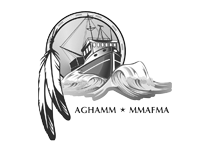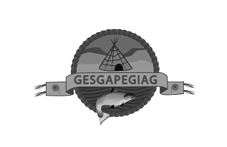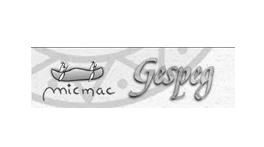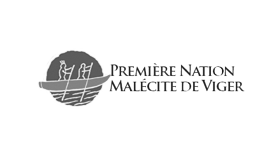ECOLOGICAL BENEFITS OF SEAWEED FARMING
The Monterey Bay Aquarium, in the framework of its Seafood Watch program, gave a high score of 7.9/10 to cultivated seaweed in 2014. It considers it to be one of the best choices in environmentally responsible consumption.1
In China, in Sanggou Bay, a study2 demonstrated that large-scale kelp farming had little impact on the sea-life environment. Another study3 suggests that areas of intensive kelp farming contribute to reducing the local availability of inorganic nitrogen and of dissolved phosphorus. In other words, they seem to slow the phenomena of eutrophication (accumulation of organic debris that can bring about a considerable reduction in available dissolved oxygen) and of ocean acidification.
In intensive aquaculture, the breeding of animals in a monoculture (e.g., the breeding of Atlantic salmon) has the disadvantage of comprising at one and the same time a source of CO2 emissions, of organic molecules and of nitrogenous molecules in the environment, notably in the form of urea and ammonia.
A new way of thinking is emerging in the industry, one that involves encouraging the development of an integrated multi-trophic aquaculture4 combining a number of ecologically complementary species.5 In this new economic model, seaweed farming has an important role to play, since it produces oxygen and captures CO2 along with inorganic nitrogen (NO3, NH4) and organic nitrogen (urea). It has already been mentioned that in China the co-cultivation of shellfish and seaweed improves growth and quality performances in both productions.6
SEAWEED FARMING PROMOTES :
Increase in local biodiversity: the crampons of farmed kelp on suspended cords shelter a greater diversity of macroinvertebrates (nematodes, polychaetes, mollusks, decapods, amphipods) than those of benthic wild kelp (the kelp that grows on the seabed);7
Local pH stabilization by absorption, sequestration and transformation of dissolved CO2 into organic carbon, which helps in the fight against ocean acidification;8, 9
The reduction of eutrophication in coastal areas through the absorption and sequestration of excess nitrogen and dissolved phosphorous;3
Local increase in the concentration of dissolved oxygen;10
Reduction in the energy of currents, waves and coastal erosion, which in turn provides protection for shellfish cultures.
- Andrea FLYNN (2014), Monterey Bay Aquarium Seafood Watch. Farmed seaweed. Worldwide, all production systems, 43 pages. [http://seafood.ocean.org/wp-content/uploads/2016/10/Seaweed-Farmed-Worldwide.pdf]
- Xing Hai ZHANG (2009), cité dans Nathalie BOURGOUGNON (2014), « Sea Plants, volume 71 », Advances in botanical research. Academic Press, 580 pages.
- Yoshiaki MAITA, et collab. (1991), « Nutrient environment in natural and cultivated grounds of Laminaria japonica », Bulletin of the Faculty of Fisheries Hokkaido University, vol. 42 (3), pages 98-106.
- Thierry CHOPIN (2015), « Marine Aquaculture in Canada: Well Established Monocultures of Finfish and Shellfish and an Emerging Integrated Muti-Trophic Aquaculture (IMTA) Approach Including Seaweeds, Other Invertebrates, and Microbial Communities », Fisheries, vol. 40 (1), pages 28-31.
- Amir NEORI, et collab. (2004), « Integrated Aquaculture: Rationale évolution and state of the art emphasizing seaweed biofiltration in modern mariculture”, Aquaculture, vol. 231 (1-4), pages 361-391. 6. FAO (1989), « Culture of kelp (Laminaria japonica) in China », RAS/86/024, Training manual, 89/5, 130 pages.
- FAO (1989), « Culture of kelp (Laminaria japonica) in China », RAS/86/024, Training manual, 89/5, 130 pages.
- Aimee WALLS, et collab. (2016), « Potential novel habitat created by holdfasts from cultivated Laminaria digitata: assessing the macroinvertebrate assemblages », Aquaculture environment interactions, vol. 8, pages 157-169.
- Zengje JIANG, et collab. (2013), « Influence of Seaweed Aquaculture on Marine Inorganic Carbon Dynamics and Sea-air CO2 Flux », Journal of the World Aquaculture Society, vol. 44 (1), pages 133-140.
- Dorte KRAUSE-JENSEN, et collab. (2015), « Macroalgae contribute to nested mosaics of pH variability in a subarctic fjord », Biogeosciences, vol. 12, pages 4895-4911.
- A. BUSCHMANN dans Nathalie BOURGOUGNON, op. cit.
- Éric TAMIGNEAUX, et collab. (2014), Présentation Algoculture : Bilan des essais de culture menés au Québec, Merinov. [http://www.merinov.ca/fr/app-publication/item/presentation-algoculture]
- Éric TAMIGNEAUX, et collab. (2013), Protocoles pour la culture de la laminaire à long stipe (Saccharina longicruris) et de la laminaire sucrée (Saccharina latissima) dans le contexte du Québec, Guide no 13-01, Merinov, 45 pages. [http://www.merinov.ca/fr/app-publication/item/laminaire-a-long-stipe]





